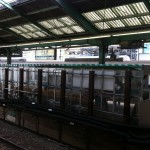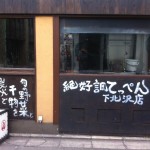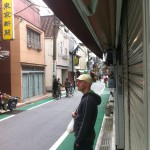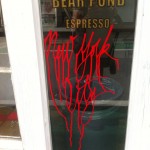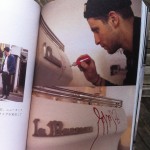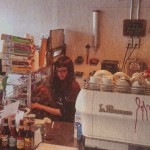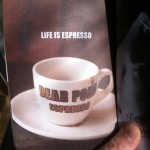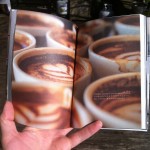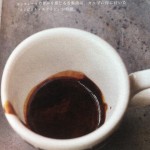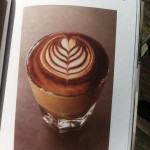Much has been written about the food scene in Tokyo. In the end, maybe it’s just a very, very big city. The “largest metropolitan area in the world”, says Wikipedia, and among the densest (at more than 37,000 per square mile). I’m sure that if we plotted the number of Michelin stars per city against either of these variables we’d find a more-than-linear relationship, for the same reasons one finds such relationships with the number of patents or any other measurable correlate of creativity.
Well, on a recent trip to Tokyo I experienced this correlation firsthand.. or maybe I just ran into a very special talent. Not that either of these possibilities excludes the other.
Morgan-san introduced me to this very cute neighborhood, Shimo-Kitazawa, just a couple of tube stops from our hotel in Shinjuku, and home to the extraordinary Bear Pond Espresso, with owner and apparently sole barista Katsu Tanaka presiding over his tricked out La Marzocco.
Some pictures first of the neighborhood:
The scale and proportions of neighborhood architecture in Tokyo are so distinct. I feel as if, were a streetscape reduced to nothing but featureless white boxes, I could still pick out a street in Tokyo from one in any other city in the world. When it works, there’s something pleasing and intimate in this configuration of space, a sense of implicit trust, of social contract and efficiency, of highly intentional design. In Shimo-Kitazawa the Japanese love of texture and material is also evident, and thankfully there isn’t so much of that ubiquitous rectangular ceramic tile on the building façades which I find so oppressive. Instead, lovingly rusted iron plates, salvaged twists of wood and artfully rough calligraphy decorate the boutiques, which rub shoulders with what look to me like traditional Edo houses among the back streets.
And now, Bear Pond. There was a “no camera” sign inside, so I was only able to snap a picture of the white sliding doors from the outside. The space is small and cement-floored, combining the shabby genius sensibility of a Bay Area garage with the curated aesthetic Miyazaki and Kondō capture so wonderfully in Whisper of the Heart. There’s enough carefully deployed clutter in the miniature space to make it clear that this is a neighborhood coffeeshop and not a boutique, yet even the furred, ingrown corners of the “order here” sign seem to signify, like the fulsome red drips of the graffiti on the coffee machine (courtesy Curtis Kulig).
(Note that several of these images are from the little Bear Pond book, which I bought a copy of although it’s undecodable by my non-Japanese-reading self.)
OK, let’s talk about the coffee. It was amazing. Morgan and I had an espresso and a macchiato each. The espresso redefines ristretto. It was a messy dark syrup, just a few cc’s, and dense, dense, dense. There were plenty of trapped aromatics, but the thick extraction didn’t create anything like the usual tiger-stripe crema— at the bottom of the cup, nothing but an inky, intense depth of flavor and color, sweet, funky and complex, cocoa-ish, with no hint of the “southern” burnt flavor and even less of the acid lemoniness of an improper extraction. This really was something new, and I’m afraid I don’t really have the words for it. It’s just a different beast.
The macchiato was good— I would have been happy with it under any other circumstance— but I think it’s a waste to blend such exquisite nectar with milk, even small amounts. The caramel-like effect Vivace achieves in the macchiato with their Vita blend was not in evidence here; this espresso felt both too dense and too ephemeral somehow to fold with the milk flavors, they seemed not impedance matched. Perhaps an issue of pH? The Japanese milk is different, also, with less body it seemed to me, and this may have contributed to my impression.
The workmanship of the little rosetta was of course perfect, but alas, “no camera please”.
In any case, if you find yourself nearby, treat yourself well— wander the neighborhood, drop in, taste what I suspect might be the most beautifully crafted espresso anywhere.

